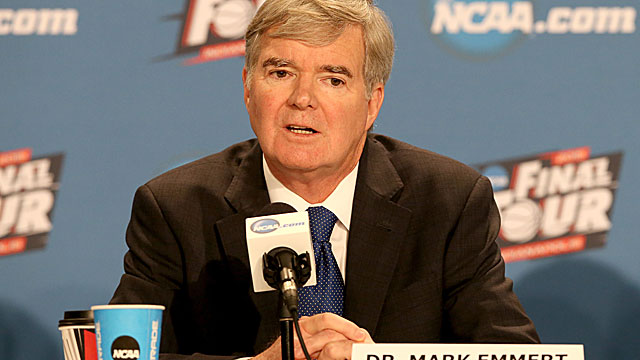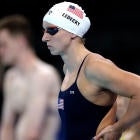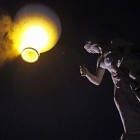It's one thing to have a legal strategy. It's another to slap a family in the face with it.
It's been less than a year and a half since the Washington Times dug up a court filing stemming from a lawsuit in the death of Frostburg State player Derek Sheely. The Division III player died in 2011 of what was described as a "brain herniation."
More concerning -- according to the wrongful death lawsuit filed by his family -- is that an assistant coach called Sheely a "pussy" as he complained of a headache.
The NCAA, the school, the former coach, the assistant who allegedly uttered the profanity, the trainer and a helmet manufacturer are being sued.
A lot of us would have done the same thing. Derek wanted to one day work for the CIA. As he lay there struggling for his life, he was reportedly challenged for being something less than a man.
But that's not the final indignity. In that court filing, the NCAA stated it has no "legal duty to protect student-athletes."
Wait, what? The association that was founded because players were dying in 1906 is taking this stance? Well, of course, because as a voluntary membership organization it has to limit liability.
In this age of concussion awareness, we thought you should know.
As the NCAA transitions to an organization primarily focusing on athlete welfare, there is an unsettling dichotomy between what the association stands for and what its lawyers interpret.
In the same sentence of the Sheely filing, the NCAA "admits that it was founded to protect young people from the dangerous and exploitive athletic practices of the time."
Let's pause to interpret that doublespeak. The NCAA was founded to protect athletes but legally doesn't have to.
There's a lot of good going on with concussion research. The NCAA has partnered in a landmark study with the Department of Defense. NCAA chief medical officer Brain Hainline is a dedicated crusader.
But there is a disconnect between the NCAA's efforts to prevent concussions and what seems like a heartless, boilerplate legal strategy.
Maybe even a question of whether a massive amateur organization is aware of common human decency. This isn't even an argument regarding the NCAA's complicity in Sheely's death. It's a question of how to convey the message.
On the recruiting trail, coaches promise mamas every day they'll take care of their sons and daughters. But the organization under whose rules those players compete has no legal duty to protect them?
This all bubbled up again this week when schools were asked by the NCAA to complete a concussion protocol checklist by Friday. It deals with "recommendations" and "guidelines." These are key words because the NCAA essentially has no way to enforce such guidelines and recommendations. When a similar mandate came down in 2010, 50 percent of schools didn't comply.
A landmark class-action concussion lawsuit went to the heart of the matter. Plaintiffs -- a group of college athletes scattered across several sports -- argued that the NCAA bore the "duty of care" in protecting athletes.
In July, the parties settled with the NCAA providing $70 million over 50 years to the afflicted. But that's only for diagnosis – not treatment -- and pales in comparison to the recent NFL concussion settlement with former players.
A judge continues to review it questioning whether $70 million over a half century is enough.
Duty of care. Someone has to be responsible, right? Or does every snap of the football becomes Buyer Beware? The NCAA admitted no wrongdoing in the settlement.
That's the sad reality of a multibillion-dollar organization formed 109 years ago because players were dying. In 2015, first and foremost it does everything to make sure it isn't liable when they do.
It may be that the entire enterprise has become too big for any one organization. Everybody wants to prevent concussions, but a unified effort to define "how" has barely begun.
Meanwhile, amateur organizations across the country are finding it difficult to find insurance for head trauma. Too much uncertainty. For every Junior Seau there is a Chuck Bednarik. One tragically committed suicide. The other lived to be 89. Both were lauded as hard-hitting warriors.
Research is going to take time -- decades, maybe longer. Until then, we'll continue to be horrified when players suffer catastrophic injuries. And the default setting will continue to be: circle the lawyers.
It took a lawsuit for the NCAA to do much as start testing for sickle cell trait. This, after the first acknowledged death from the affliction came 35 years earlier. Over-exertion during offseason workouts has been the leading cause of death of college football players since 2000.
No NCAA legislation covers contact limits during the season or in the postseason. On their own, the Ivy League and Pac-12 have limited full-padded practices to twice a week during the season.
In a long form story published on its website the NCAA said "fear has surged ahead of science.
"Public perception and media discourse have altered the conversation surrounding concussion(s). For many people, a lack of understanding of concussion(s) rocketed past awareness and landed squarely at angst."
Well, yeah. Research could take decades, remember? If reform comes more swiftly from the courtroom, so be it. It's still reform.
Until then, fear most certainly will surge ahead of science. Experts tell us there are more than 40 definitions for the word "concussion." Hainline told CBSSports.com in 2013 concussion diagnosis management was in the "primitive" stages.
All credit to the NCAA for its research initiative but let's not shame the public and media for its [alleged] lack of understanding. As recently as 2014 the American Journal of Sports Medicine said the NCAA could be doing better with concussion management.
Here's a detailed timeline of the NCAA's handling of head trauma.
In a recent email, CBSSports.com asked Hainline about that dichotomy between the association's research advocacy and its legal stance. Hainline referred the question to an NCAA spokesman who replied: " … one should not confuse the status of the laws across the nation: an organization voluntarily making rules around sports practices and competitions does not create a legal duty to its participants."
Derek Sheely's family is well aware.
















